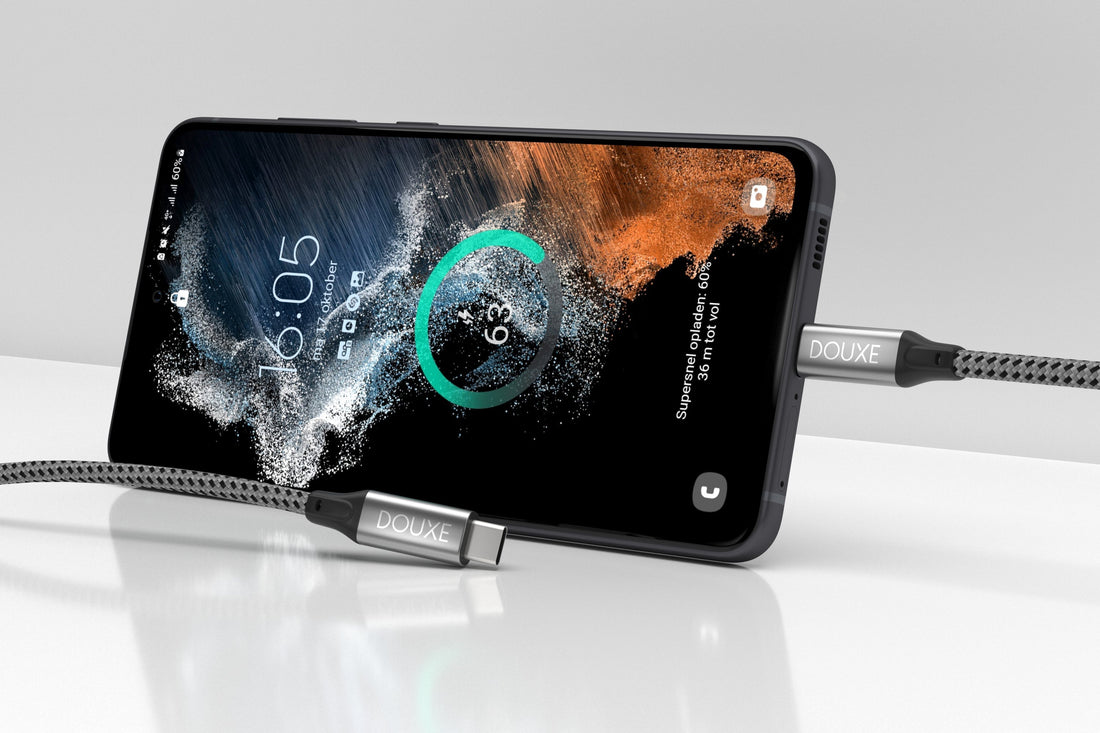
All About USB-C in 2025: History, Benefits, and New Regulations
Share
All About USB-C in 2025: History, Benefits, and New Regulations
USB-C is the universal port of today and tomorrow. Since its introduction, USB-C has become the standard for charging, data transfer and video output. In this article, we will take you through its history, key benefits and the European regulations that will come into effect in 2024.
What is USB-C?
USB-C is a compact, reversible USB connector that can transfer data, power, and video. It was designed to replace older USB-A and Micro-USB ports, and it does so successfully. USB-C now supports transfer speeds of up to 40 Gbps (with USB4) and delivers up to 100W power via USB Power Delivery .
Brief History of USB-C
USB-C was developed by the USB Implementers Forum (USB-IF) — a collaboration between Apple, Intel, and Microsoft — and first appeared in 2014. The standard was quickly picked up by manufacturers of laptops, smartphones, and accessories. Key milestones:
- 2017 : USB 3.2 – transfer up to 20 Gbps
- 2019 : Introduction of USB4 – 40Gbps, wider compatibility
- 2024 : EU regulation makes USB-C mandatory on small electronic devices
The benefits of USB-C at a glance
- ✅ Reversible connector – you never have to look at how to plug in again
- ✅ Super fast data transfer – up to 40 Gbps with USB4
- ✅ Fast charging possible – up to 100W power via USB Power Delivery
- ✅ Universal – works with laptops, smartphones, tablets, monitors, accessories
- ✅ Supports video – up to 4K or even 8K depending on the version
New regulations from 2024
Since fall 2024 is it in the EU mandatory that smartphones, tablets, cameras and other portable electronics are equipped with a USB-C port . With this the EU wants to:
- Reduce e-waste (fewer chargers needed)
- Providing consumers with convenience with one universal cable
- Save unnecessary costs (up to €250 million/year)
➡️ Apple also had to adapt . New iPhones in Europe now have a USB-C port instead of Lightning.
USB-C in 2025: Where are we now?
Nowadays, almost all new laptops, phones and tablets have a USB-C connection. Accessories such as external SSDs, monitors, chargers and USB-C hubs have become indispensable.
USB-C hubs allow you to turn a single port into multiple connections: HDMI, USB-A, Ethernet, SD card and more. They are indispensable for anyone working with a modern laptop.
Frequently Asked Questions about USB-C (FAQ)
Can USB-C display video?
Yes, via USB-C you can use video output up to 4K or even 8K, provided your device supports it (USB-C Alt Mode or DisplayPort).
What is USB Power Delivery (USB PD)?
This is a standard that delivers up to 100W of power via USB-C. Ideal for charging laptops, tablets and fast smartphone chargers.
Is USB-C compatible with older USB cables?
Yes, you can continue to use older devices via adapters and cables. USB-C is designed with backwards compatibility in mind.
Why is USB-C now mandatory in the EU?
The EU wants to provide convenience for consumers, reduce e-waste and ensure that not every device needs its own charger.
Conclusion
USB-C is no longer “the future” — it is the standard. With high data speeds, powerful charging, universal compatibility and clear regulations, USB-C will be indispensable in 2025.
🔌 Looking for a good USB-C hub for your laptop or smartphone?
Browse our range of reliable and stylish USB-C hubs that fit perfectly into any setup.

